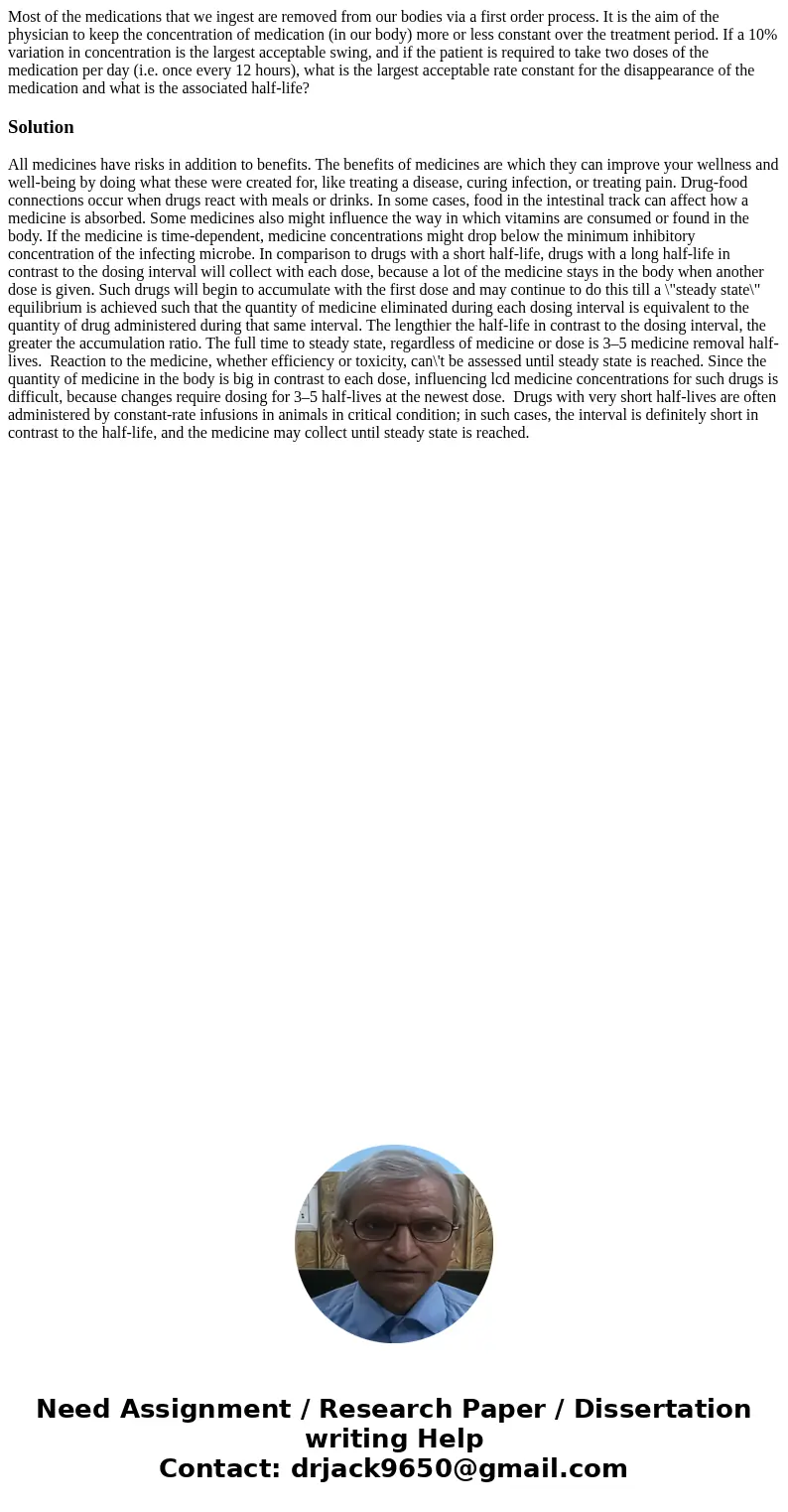Most of the medications that we ingest are removed from our
Most of the medications that we ingest are removed from our bodies via a first order process. It is the aim of the physician to keep the concentration of medication (in our body) more or less constant over the treatment period. If a 10% variation in concentration is the largest acceptable swing, and if the patient is required to take two doses of the medication per day (i.e. once every 12 hours), what is the largest acceptable rate constant for the disappearance of the medication and what is the associated half-life?
Solution
All medicines have risks in addition to benefits. The benefits of medicines are which they can improve your wellness and well-being by doing what these were created for, like treating a disease, curing infection, or treating pain. Drug-food connections occur when drugs react with meals or drinks. In some cases, food in the intestinal track can affect how a medicine is absorbed. Some medicines also might influence the way in which vitamins are consumed or found in the body. If the medicine is time-dependent, medicine concentrations might drop below the minimum inhibitory concentration of the infecting microbe. In comparison to drugs with a short half-life, drugs with a long half-life in contrast to the dosing interval will collect with each dose, because a lot of the medicine stays in the body when another dose is given. Such drugs will begin to accumulate with the first dose and may continue to do this till a \"steady state\" equilibrium is achieved such that the quantity of medicine eliminated during each dosing interval is equivalent to the quantity of drug administered during that same interval. The lengthier the half-life in contrast to the dosing interval, the greater the accumulation ratio. The full time to steady state, regardless of medicine or dose is 3–5 medicine removal half-lives. Reaction to the medicine, whether efficiency or toxicity, can\'t be assessed until steady state is reached. Since the quantity of medicine in the body is big in contrast to each dose, influencing lcd medicine concentrations for such drugs is difficult, because changes require dosing for 3–5 half-lives at the newest dose. Drugs with very short half-lives are often administered by constant-rate infusions in animals in critical condition; in such cases, the interval is definitely short in contrast to the half-life, and the medicine may collect until steady state is reached.

 Homework Sourse
Homework Sourse